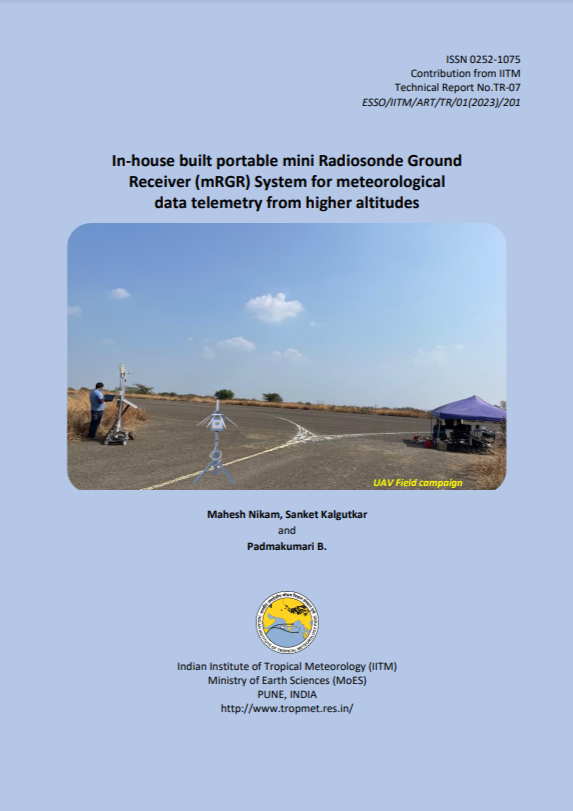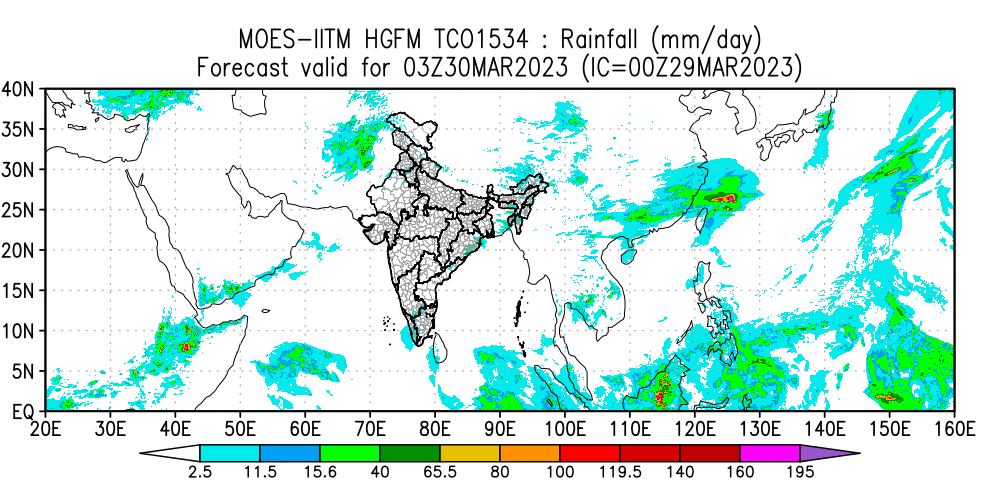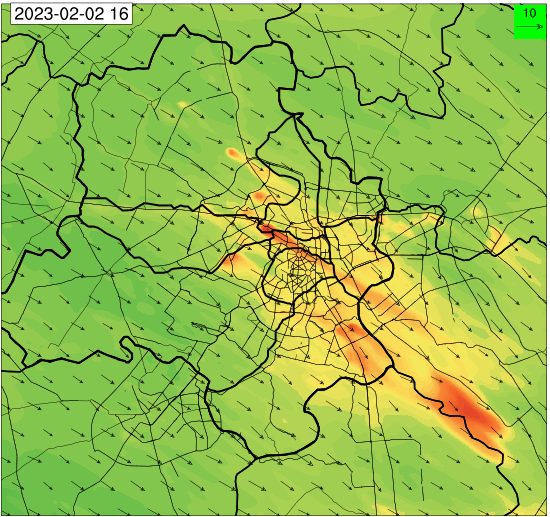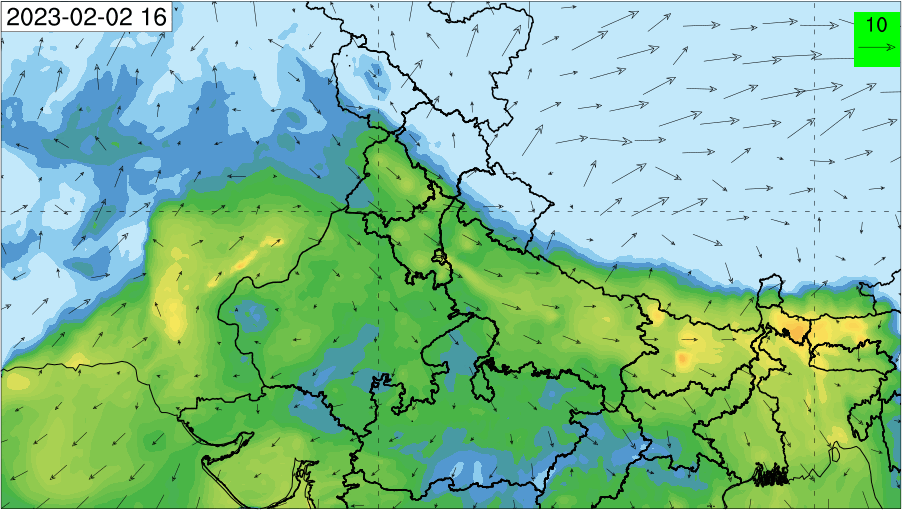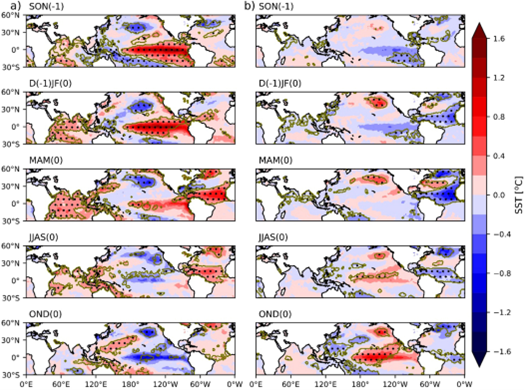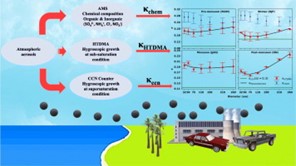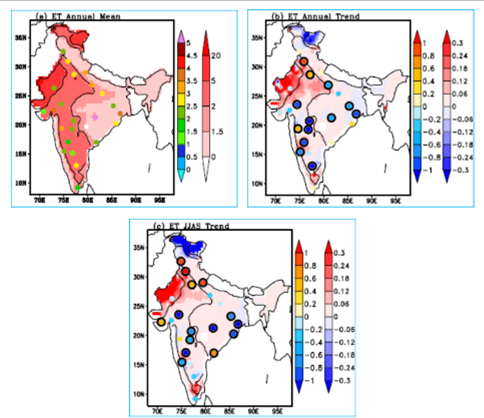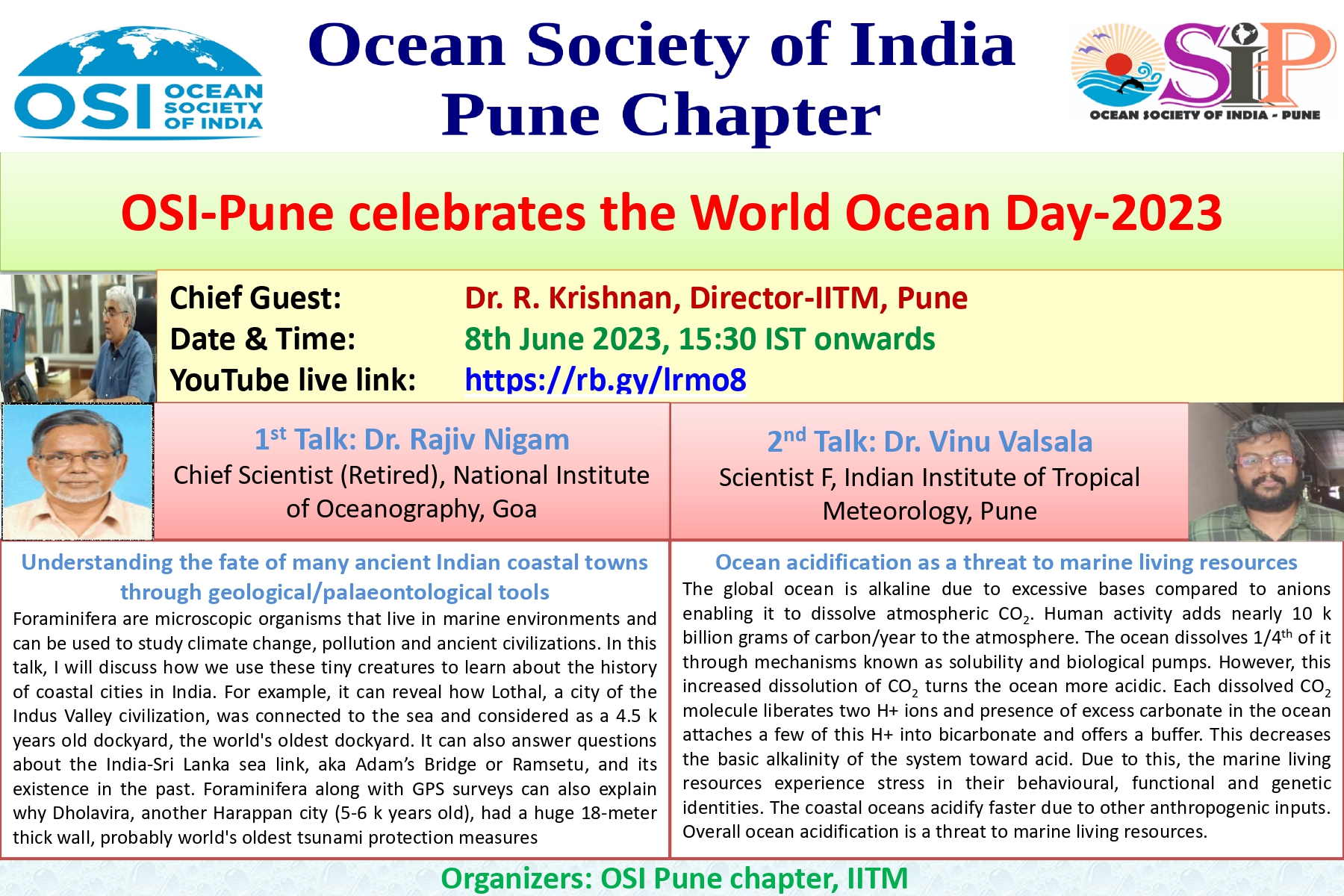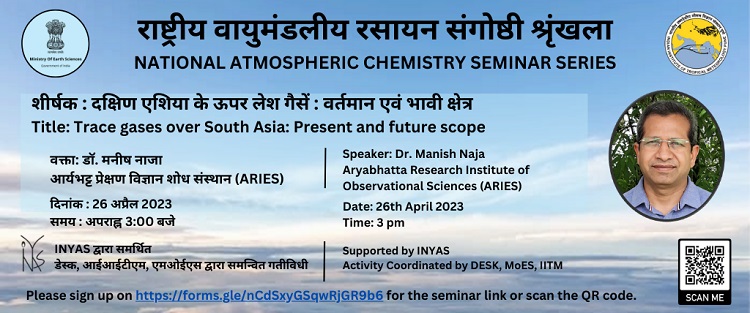RAC Poster Session
Seminars / Lectures
IITM Publication Highlights
Machine learning based quantification of VOC contribution in surface ozone prediction
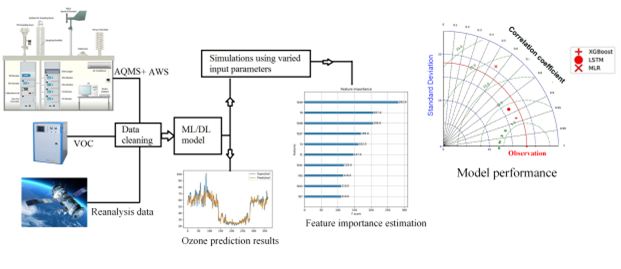 Volatile organic compounds (VOCs) are crucial in driving ozone concentration; particularly in urban areas where VOC limited regimes are prominent. The limited measurements of VOCs, however, hinder assessing the VOC-ozone relationship. The application of machine learning (ML) models for surface ozone prediction using meteorology and pollutant data has been explored in this work for 2014–16 over a metropolitan region in India. Simulations with different inputs were conducted to weigh the relative importance of different parameters from an ozone prediction perspective. While isoprene was identified as a prominent parameter for predicting ozone peaks at this location, CO was also featured important. Season-wise comparison of ozone prediction results shows low accuracy for summer.
Volatile organic compounds (VOCs) are crucial in driving ozone concentration; particularly in urban areas where VOC limited regimes are prominent. The limited measurements of VOCs, however, hinder assessing the VOC-ozone relationship. The application of machine learning (ML) models for surface ozone prediction using meteorology and pollutant data has been explored in this work for 2014–16 over a metropolitan region in India. Simulations with different inputs were conducted to weigh the relative importance of different parameters from an ozone prediction perspective. While isoprene was identified as a prominent parameter for predicting ozone peaks at this location, CO was also featured important. Season-wise comparison of ozone prediction results shows low accuracy for summer.
Kalbande R., Kumar Bipin, Maji S., Yadav R., Atey K., Rathore D.S., Beig G., Chemosphere, 326: 138474, June 2023, DOI:10.1016/j.chemosphere.2023.138474, 1-8
Read MoreA new approach for seasonal prediction using the coupled model CFSv2 with special emphasis on Indian Summer Monsoon
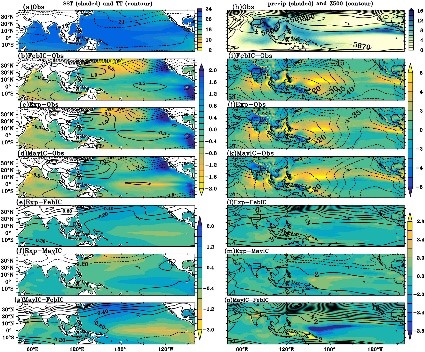 Predicting Indian Summer Monsoon (ISM) is a challenging task due to its complexity and nonlinear interactions. Three sets of hindcast experiments are carried out for 9 months each, for the period 1993-2019, NCEP-CFSv2. The experiments differ from each other in the way they are initialized: one is initialized in February (FebIC), and the second in May (MayIC), whereas in the third one (Exp), ocean is initialized in February and allowed to evolve but the atmosphere reinitialized every month up to May. The representation of mean tropical Indo-Pacific Sea surface temperature (SST), Walker circulation, mean monsoon circulation and moisture transport to Indian landmass are better represented in Exp. The ISM rainfall prediction (interannual) skill improved in Exp as compared to FebIC and MayIC over central India, Indian land mass and extended monsoon region. The initialization strategy adopted in Exp reduces the model initial shocks especially in the upper ocean heat content and SST over the Indo-Pacific region, thereby offering a cost-effective alternative approach for reduction of the initial shock. The well-known cold tongue SST bias over the equatorial Pacific in MayIC is reduced significantly in Exp with improved monsoon teleconnections and the overdependence of ISM rainfall on El Niño Southern Oscillation in MayIC is also reduced in Exp.
Predicting Indian Summer Monsoon (ISM) is a challenging task due to its complexity and nonlinear interactions. Three sets of hindcast experiments are carried out for 9 months each, for the period 1993-2019, NCEP-CFSv2. The experiments differ from each other in the way they are initialized: one is initialized in February (FebIC), and the second in May (MayIC), whereas in the third one (Exp), ocean is initialized in February and allowed to evolve but the atmosphere reinitialized every month up to May. The representation of mean tropical Indo-Pacific Sea surface temperature (SST), Walker circulation, mean monsoon circulation and moisture transport to Indian landmass are better represented in Exp. The ISM rainfall prediction (interannual) skill improved in Exp as compared to FebIC and MayIC over central India, Indian land mass and extended monsoon region. The initialization strategy adopted in Exp reduces the model initial shocks especially in the upper ocean heat content and SST over the Indo-Pacific region, thereby offering a cost-effective alternative approach for reduction of the initial shock. The well-known cold tongue SST bias over the equatorial Pacific in MayIC is reduced significantly in Exp with improved monsoon teleconnections and the overdependence of ISM rainfall on El Niño Southern Oscillation in MayIC is also reduced in Exp.
Fousiya T.S., Gnanaseelan C., Halder S., Kakatkar R., Chowdary J.S., Patekar D., Parekh A., International Journal of Climatology, Online, May 2023, DOI:10.1002/joc.8126, 1-21
Read MoreWiFEX: Walk into the Warm Fog over Indo-Gangetic Plain Region
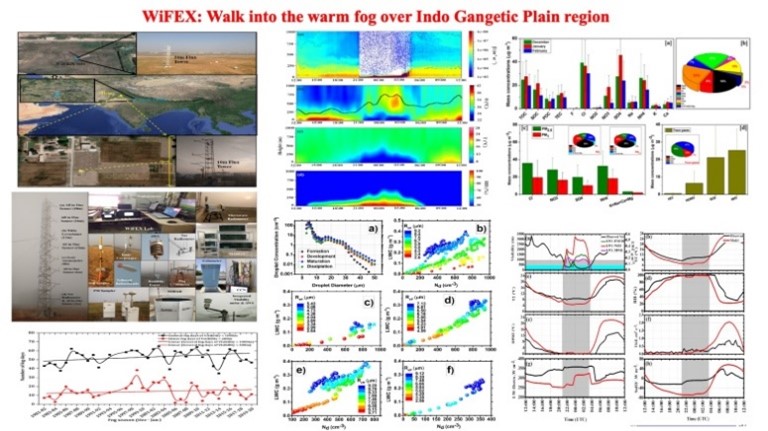 The presence of persistent heavy fog in northern India during winter creates hazardous situations for transportation systems and disrupts the lives of about 400 million people.
The presence of persistent heavy fog in northern India during winter creates hazardous situations for transportation systems and disrupts the lives of about 400 million people.
WiFEX is a first-of-its-kind multi-institutional initiative dealing with intensive ground-based measurement campaigns for developing a suitable fog forecasting capability under the aegis of the smart cities mission of India. An operational modeling framework, the WRF Model, was set up to provide fog predictions during the measurement campaign. These field observations helped to interpret the strengths and deficiencies in the numerical modeling framework. Results have shown that micrometeorological, thermodynamic, surface dynamical processes, microphysical properties, and synoptic-scale systems are alone not governing the fog genesis and evolution, but the detailed chemical processes also play a crucial role in the fog life cycle and should necessarily be considered in fog modelling efforts over polluted regions.
Ghude S.D., Jenamani R.K., Kulkarni R., Wagh S., Dhangar N.G., Parde A.N., Acharja P., Lonkar P., Govardhan G., Yadav P., Vispute A., Debnath S., Lal D. M., Bisht D.S., Jena C., Pawar P.V., Dhankhar S.S., Sinha V., Chate D.M., Safai P.D., Nigam N., Konwar M., Hazra A., Dharmaraj T., Gopalkrishnan V., Padmakumari B., Gultepe I., Biswas M., Karipot A.K., Prabhakaran Thara, Nanjundiah R.S., Rajeevan M., Bulletin of the American Meteorological Society, 104, May 2023, DOI:10.1175/BAMS-D-21-0197.1, E980–E1005
Read MoreBinary collisions of water drops in presence of horizontal electric fields: A wind tunnel study
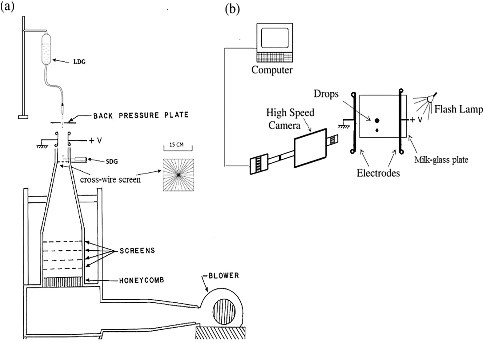 Effect of horizontal electric field (EH) = 0, 100, and 300 kVm−1 on the characteristics of binary collisions of small water drops (dS = 0.4–1.8 mm diameter) with large drops (dL = 3–3.5 mm diameter) has been investigated in a small vertical wind tunnel using a high-speed digital camera. The increase in the electric field reduces the probability of coalescence when a non-dimensional parameter, Weber number (We) < 1. However, an increase in We restricts the probability of coalescence when We ≥ 1. After a binary collision, the relaxation time for coalescence is higher than that for the breakup and increases from the filament to sheet to disk mode of breakup in all-electric field values. Fragment size distributions after the filament and sheet types of breakups differ. More violent collisions have a tendency to increase the number of fragments of the sizes between dL and dS. It is concluded therefore that, the effect of the electric field needs to be included in the estimation of drop growth and precipitation in clouds.
Effect of horizontal electric field (EH) = 0, 100, and 300 kVm−1 on the characteristics of binary collisions of small water drops (dS = 0.4–1.8 mm diameter) with large drops (dL = 3–3.5 mm diameter) has been investigated in a small vertical wind tunnel using a high-speed digital camera. The increase in the electric field reduces the probability of coalescence when a non-dimensional parameter, Weber number (We) < 1. However, an increase in We restricts the probability of coalescence when We ≥ 1. After a binary collision, the relaxation time for coalescence is higher than that for the breakup and increases from the filament to sheet to disk mode of breakup in all-electric field values. Fragment size distributions after the filament and sheet types of breakups differ. More violent collisions have a tendency to increase the number of fragments of the sizes between dL and dS. It is concluded therefore that, the effect of the electric field needs to be included in the estimation of drop growth and precipitation in clouds.
Bhalwankar R., Pawar V., Kamra A.K., Journal of Geophysical Research: Atmospheres, 128: e2022JD037543, April 2023, DOI:10.1029/2022JD037543, 1-18
Read MoreNew Publications
Retrieval and validation of cloud condensation nuclei from satellite and airborne measurements over the Indian Monsoon region
Aravindhavel A., Choudhury G., Prabhakaran Thara, Murugavel P., Tesche M., Atmospheric Research, 290: 106802, July 2023, DOI:10.1016/j.atmosres.2023.106802, 1-15
Modulations in the Indian Summer Monsoon–ENSO teleconnections by the North Tropical Atlantic
Sooraj K.P., Aswale A.M., Swapna P., Terray P., Sandeep N.S., Climate Dynamics, Online, May 2023, DOI:10.1007/s00382-023-06817-4, 1-20
Seasonal variability in size-resolved hygroscopicity of sub-micron aerosols over the Western Ghats, India: Closure and parameterization
Ray Avishek, Pandithurai G., Mukherjee S., Anil Kumar V., Hazra A., Patil R.D., Waghmare V., Science of The Total Environment, 869: 161753, April 2023, DOI:10.1016/j.scitotenv.2023.161753, 1-9
Signatures of aerosol-induced decline in evapotranspiration over the Indo-Gangetic Plain during the recent decades
Ramarao M.V.S., Ayantika D.C., Krishnan R., Sanjay J., Sabin T.P., Mujumdar M., Singh K.K., Mausam, 74, April 2023, DOI:10.54302/mausam.v74i2.6031 , 297-310
PDF Publisher LinkIITM Events
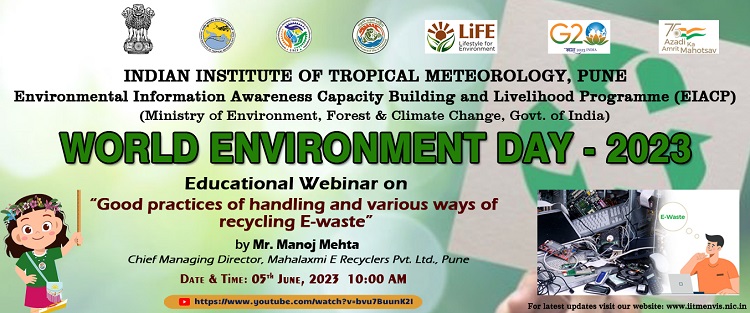
World Environment Day – 2023
(05 June 2023)
IITM-EIACP PC conducted activities such as E-waste collection drive, Tree sapling plantation & distribution drive and Mission LiFE drawing display under "Mission LiFE Movement". Online talk by Mr. Manoj Mehta, Chief Managing Director, Mahalaxmi E Recyclers Pvt. Ltd., Pune
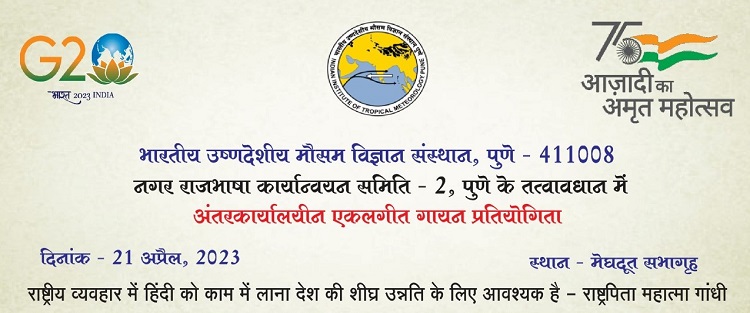
नगर राजभाषा कार्यान्वयन समिति (नराकास) - अंतर कार्यालयीन प्रतियोगिता
(21 अप्रैल 2023)
अंतर कार्यालयीन "एकलगीत गायन प्रतियोगिता" का आयोजन हमारे संस्थान द्वारा किया गया । इस प्रतियोगिता में नराकास-2 के सदस्य, पुणे स्थित 19 केंद्रीय सरकार कार्यालयों से कुल 32 गायक/गायिकाओं ने प्रसिद्ध हिंदी गीतों पर प्रस्तुति दी ।
